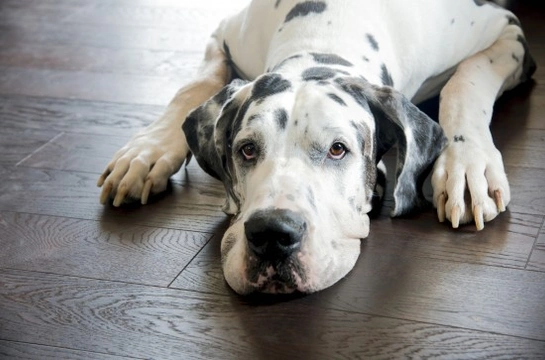Pets
Pets for studWanted petsBreedersAccessories & services
Knowledge hub
Support
Support & safety portal
Identifying higher risk factors for bloat and GDV in dogs
Bloat or GDV (gastric dilation volvulus) is a fast onset and very serious canine condition that can quickly prove fatal if prompt treatment is not sought. It is caused by gastric dilation, or the stomach of the dog filling with gas, which places pressure on the entry and exit of the stomach, which in turn prevents the gas from escaping in the normal ways. As well as simple gastric dilation, which is very serious in itself, bloat can also be accompanied by a twisting of the stomach under pressure, which effectively cuts off the digestive system and the normal digestive process. This secondary stage of the condition is the volvulus part. When the digestive system stops up in this way, and the stomach twists, the stomach becomes dangerously distended, which is both incredibly painful for the dog, and also ultimately commonly leads to death if left untreated.
All dog owners should be aware of the potential signs and symptoms of bloat and GDV and be prepared to act quickly if they expect that their dogs are in the early stages of the condition, as fast treatment can save lives. Some breeds and types of dogs are more at risk of developing bloat than others, and certain conditions and lifestyles can also elevate the risk factors for bloat in dogs of all types.
In this article, we will look at the risk factors that can heighten the possibility of any dog developing bloat, in order to provide more information to owners of potentially at-risk dogs. Read on to learn more.
High risk breeds
While bloat can affect dogs of all shapes and sizes, large and giant dogs are much more prone to suffering from an attack than smaller dogs. The Great Dane is the breed that is most likely to develop the condition at some point over the course of their lives, and the Akita, standard poodle, German shepherd, Irish wolfhound and Irish setter are also classed as high risk breeds. Large and giant breeds as a whole are at risk of bloat, due to their deep chests, and any deep chested breed is likely to have higher risk factors than other dogs.
Other risk factors
Bloat or GDV is a particularly challenging condition as it comes on suddenly with little to no warning, and it is almost impossible to identify the potential risk factors that might combine to cause an attack. However, studies into bloat and affected dogs have drawn some conclusions that indicate that certain living conditions and other factors seem to have a part to play in the condition’s development.
- Dogs with deep yet narrow chests are the most likely to be affected by the condition, and the more room that there is within the chest for the stomach to move around, the higher the risk factors are deemed to be.
- Dogs that are either slightly underweight or simply naturally lean are also considered to be more at risk of the condition than dogs that are well padded or even overweight, for reasons unknown. It is hypothesised that a lower bodyweight means that there is more room for stomach movement within the abdomen, while dogs that have a higher body fat ratio have better internal fat padding to minimise stomach movement.
- Older dogs are more likely to develop the condition than their younger counterparts, with giant breeds over the age of three and large breeds over the age of five being the most likely to be at risk of the condition.
- Dogs that are closely related to other dogs that have developed the condition in the past are also much more likely to develop bloat or GDV than dogs with no ancestral history of the condition.
- Dogs that gulp their food or eat very quickly have a 15% greater chance of developing the condition than dogs that eat at a steady pace, which may be due to the excessive amounts of air that fast eaters gulp down with their food.
- Raising food and water bowls up to chest height used to be considered as a good way to reduce the chances of a dog developing bloat or GDV, but it has since been discovered that this can in fact increase, and not reduce, the chances of developing the condition.
- Nervous, shy dogs and those that are prone to stress and anxiety are much more likely to develop bloat than cool, relaxed dogs, and so stress levels should be kept to a minimum for all dogs.
- Feeding just one or two large meals per day rather than dividing the meals into smaller portions can also raise the risk of bloat, as can feeding a diet of dry food only.
- Moistened dry food fed alone, or dry food that lists fat within the first three ingredients were also found to raise the risk.
While there is no guaranteed or sure-fire way of preventing any dog from being afflicted by bloat or GDV, taking into account the risk factors above and working to reduce them can minimise the possibility of a potential attack.



